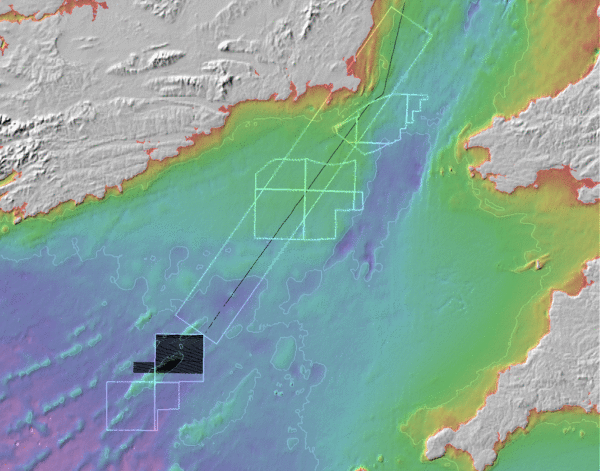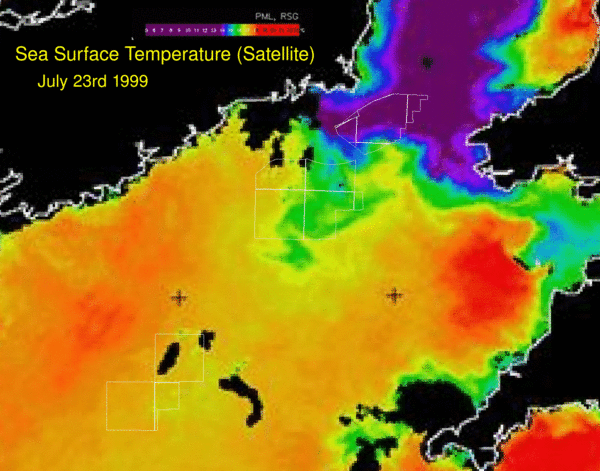

rotated white box is the registration section for the transit MB-WC data.
(archived from summer 1999)
| back to: Report Index |
Celtic
Sea Front - WC Section RV Celtic Explorer Cruise CE17-01 Chief Scientist: Kevin Sheehan, MI July 22nd to August 6th 2017 |
John E. Hughes Clarke Anand Hiroji Jose Cordero Ros Center for Coastal and Ocean Mapping University of New Hampshire |
 |
 |
| GEBCO bathymetry with
CE17-01 navigation superimposed rotated white box is the registration section for the transit MB-WC data. |
Sea Surface Temperature Map (archived from summer 1999) |






